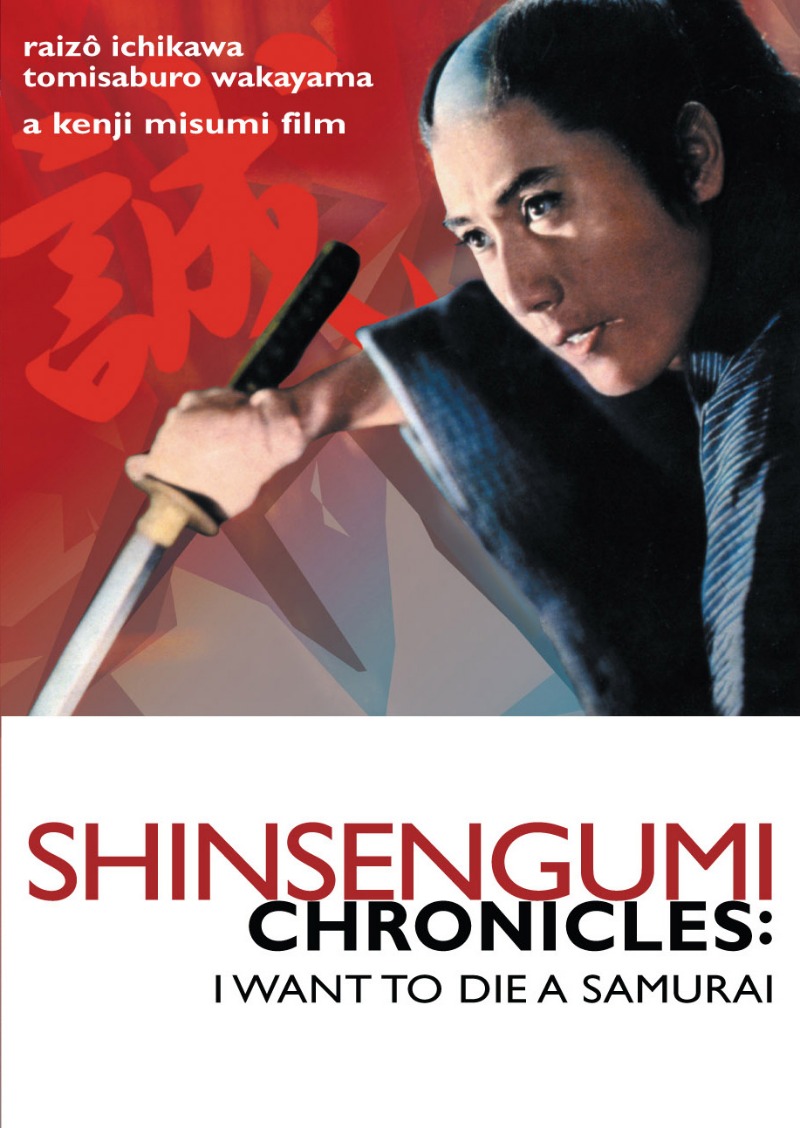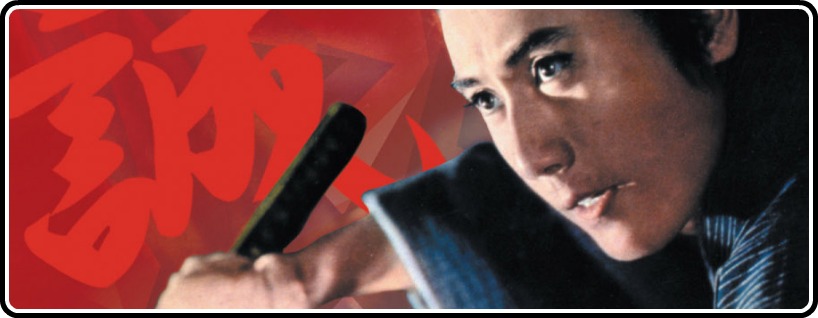“Your eyes were sparkling when you wanted to join. Now they are dull.”
If anyone knows me, they’ll know I’m a huge fan of samurai films. Especially when it comes to that unstoppable force to be reckoned with, the warrior who has too much pride to ever let up, even when being beaten to an inch of their life. Taking place in 19th century Japan, Shinsengumi Chronicles: I Want to Die a Samurai was a film that I had never seen but had heard great things from colleagues. It’s also one that helps a lot if you read up a bit on the Shinsengumi clan first to give a bit of a back story to the events that are unfolding on screen.
The Shinsengumi were the elite police force of the late shogunate period. Some say they were elitists that used violence to get their way. Others say they were honorable men who had to be strict in order to keep peace in the land. Mizumi’s film shows a little from column A and a little from column B, making an above average samurai film that gives us plenty of the red stuff but also has some great political intrigue and corruption from the higher ups.
Susumu Yamazaki (Raizo Ichikawa) is an honest man who wants to join the Shinsengumi due to his admiration of its leader, Isami Kondo (Tomisaburo Wakayama) and because, as the title depicts, he wants to live and die a samurai. Sadly as the story unfolds, he sees reality and idealism come into constant conflict and that deceit and betrayal are also constant. What’s interesting is that, even with the corruption of key figures in the Shinsengumi, Mizumi still shows these men as heroes, even if what some of them do is despicable.
As the events throughout unfold, Yamazaki has to see the corruption within, during the time of the Ikedaya Incident, which was when rebels were attempting to burn down the city and kidnap the emperor. As low burn at first, Mizumi is smart to pace the film’s action pieces, giving us just enough every so often, not as a sense of violence, but as a way to keep the story moving forward. Throughout it all, Yamazaki’s ideal notion of the samurai begins to deteriorate before his very eyes.
For the samurai lover out there, they will have a treat seeing this film, considering it isn’t as widely known as Akira Kurosawa’s epis Seven Samurai or Yojimbo/Sanjuro or the Lone Wolf and Cub series which then became Shogun Assassin here in the States. And for good reason. It’s a fun film, with betrayal and as per usual, a lot of history to look into in order to understand the background of what was going on at the time. The underlying problem, while not a game ender, is that you don’t need to do that with Kurosawa’s films. Sometimes the story should be cut and dry for an audience, and this one doesn’t translate as well as others that came before it or after it, for that matter.
Animiego has done a wonderful job in restoring this film. The blood, when on screen, is punched up more so, giving a well deserved wallop whenever it comes about. The sounds of the katana clashing and the music are also given the treatment, which are vital to any samurai film. It’s not as great as Kurosawa’s foray into the world of the samurai or as glorious as Lone Wolf and Cub (also directed by Kenji Misumi and starring Tomisaburo Wakayama), but it is a serviceable film, definitely worth your time to check it out.
6/10





![Bergman Island (The Criterion Collection) [Blu-ray]](https://criterioncast.com/wp-content/uploads/2022/11/bergman-island-the-criterion-collection-blu-ray-400x496.jpg)
![This Is Not a Burial, It’s a Resurrection (The Criterion Collection) [Blu-ray]](https://criterioncast.com/wp-content/uploads/2022/11/this-is-not-a-burial-its-a-resurrection-the-criterion-collection-blu-ray-400x496.jpg)
![Lars von Trier's Europe Trilogy (The Criterion Collection) [The Element of Crime/Epidemic/Europa] [Blu-ray]](https://criterioncast.com/wp-content/uploads/2022/11/lars-von-triers-europe-trilogy-the-criterion-collection-the-element-of-400x496.jpg)
![Imitation of Life (The Criterion Collection) [Blu-ray]](https://criterioncast.com/wp-content/uploads/2022/11/imitation-of-life-the-criterion-collection-blu-ray-400x496.jpg)
![The Adventures of Baron Munchausen (The Criterion Collection) [4K UHD]](https://criterioncast.com/wp-content/uploads/2022/11/the-adventures-of-baron-munchausen-the-criterion-collection-4k-uhd-400x496.jpg)
![Cooley High [Criterion Collection] [Blu-ray] [1975]](https://criterioncast.com/wp-content/uploads/2022/11/cooley-high-criterion-collection-blu-ray-1975-400x496.jpg)
1 comment